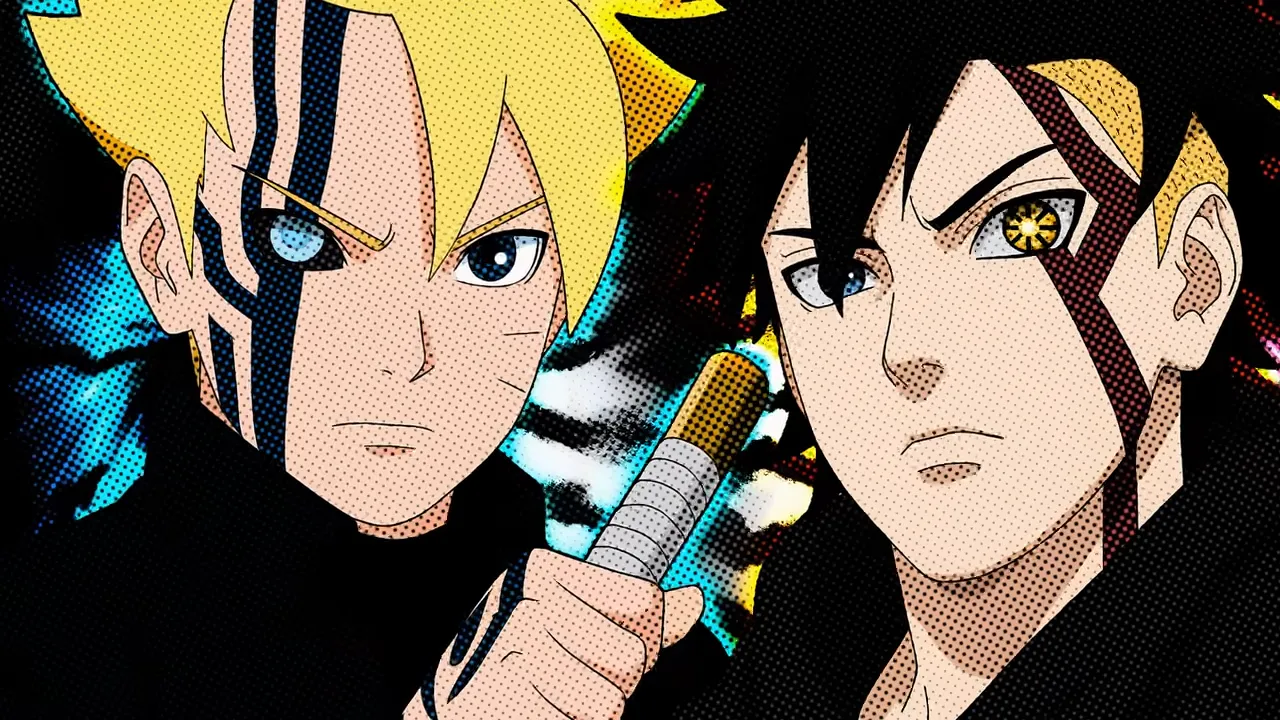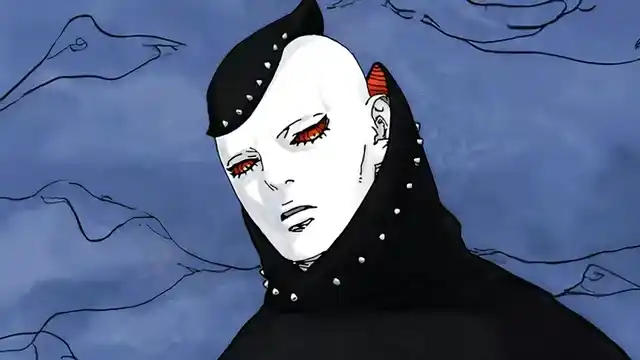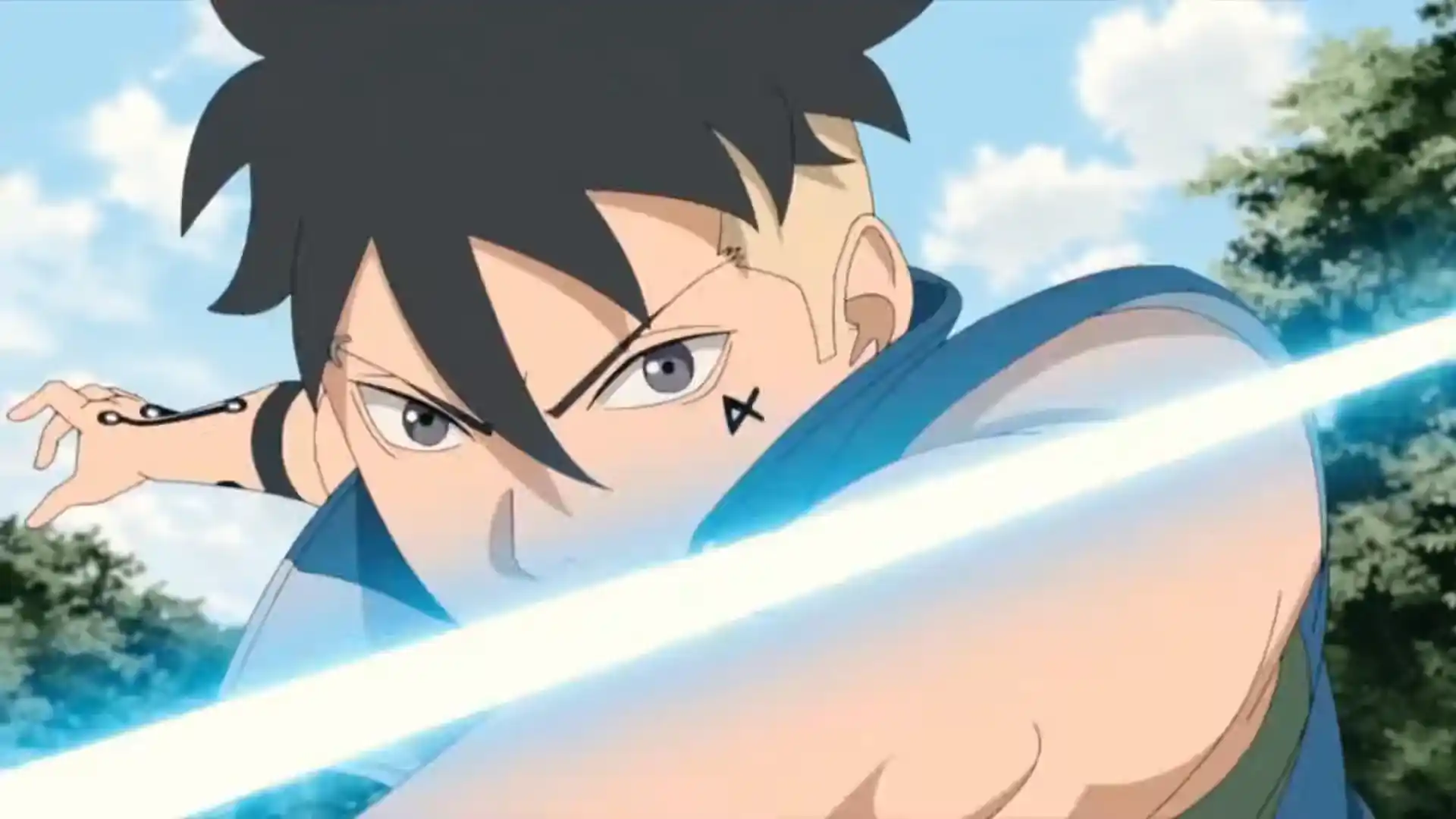Otsutsuki’s Flying God Secret, Unveiling New Powers, Philosophies, and Epic Conflicts
Boruto Chapter 16: New Powers, Fate & Eida’s Secret!
What if Boruto developed a new technique capable of changing the course of any battle? What if Momoshiki’s powers now entirely belong to him, and his potential has become limitless? And what about the philosophy of fate and the dangers of meddling with the future? This chapter of Boruto: Two Blue Vortex unveils shocking secrets and new possibilities for our heroes and sets the stage for epic conflicts! But what is Eida hiding, and why will her choice be decisive? Let’s dive into all the details of this thrilling chapter together.
To discover all the hidden moments in this chapter, read the article till the end. Let’s start analyzing the chapter.
This chapter not only adds a lot of information to the overall plot but also reveals new facets of the main characters’ personalities. The flashback about creating a technique similar to the Flying Thunder God Technique and Boruto’s hidden abilities is intriguing.
Boruto created his technique inspired by the legendary Flying Thunder God Technique, but not in the original form created by Minato. Instead, it’s a version developed by his future self. This space-time technique allows instant travel, either for Boruto himself or to teleport others. As I understand it, Boruto created it based on the abilities of the Karma he received. Specifically, he can open portals to other dimensions, and anywhere he desires.
We saw this ability used by Jigen when he appeared at Naruto’s house and tried to take Kawaki. It turns out that Boruto can use Karma, and he does it regularly. At this moment, Momoshiki does not appear or show any signs. This leads me to think that this is already his power and that everything related to Momoshiki’s abilities works the same way.
This once again confirms the statement that Boruto is an Otsutsuki and supports the theory that Momoshiki’s powers are now his own. Kashin Koji also confirmed this. Quoting: “Space-time ninjutsu. It instantly transports you or other people anywhere. As with flying, it’s a basic Otsutsuki ability.”
This confirms my earlier guesses, and everything I’ve said is true: Boruto is 100% an Otsutsuki, and Momoshiki’s powers are now his own. Boruto’s potential in such a situation is genuinely limitless.
And it seems I’ve figured out the key to using all of Momoshiki’s abilities. This has already been discussed in previous chapters of the Boruto manga. Remember Chapter 63, specifically Scan 37, where Code says something interesting about Karma. Quoting: “The Otsutsuki’s combat experience, accumulated over millennia, gets overlaid upon your mind and body. That’s why you get stronger.”
It’s simple. To use all of Momoshiki’s abilities and Boruto’s hidden powers, he needs to fully master control of the Karma.
The Singularity of Fate
The philosophy and danger of meddling with the future are at the core of Boruto’s interactions with his friends. One of the key moments in this chapter is the discussion of the “singularity of fate” phenomenon. Koji explains to Boruto that the future is not a fixed path but an interweaving of countless possibilities.
“The singularity of fate” is a unique point where all possible outcomes converge. Koji warns that any attempt to change the future or predict its consequences could create unexpected problems. This phenomenon is one of the central philosophical themes of the chapter. Boruto must act carefully to avoid harming his world.
Special attention is given to the fact that Boruto himself is the singularity point, capable of influencing the fates of others. Koji urges him to use this knowledge wisely but cautions that the more people learn about future events, the more the timelines will be altered. Together, they must save the world from the shadows.
Essentially, Boruto is now in the position of the Shadow Hokage of Konoha, just like his teacher Sasuke Uchiha.
At this moment, Eida becomes an observer of this moment from the past. Her ability to see the past gives her a complete understanding of what’s happening. Despite this, she remains silent, which raises questions among fans.
I consider her to be the most neutral character in the Boruto manga. She only cares about herself and her brother. Even Kawaki doesn’t interest her as much as he did in previous chapters, highlighting Eida’s growth. She’s now able to prioritize and understand what’s most important. And right now, the most important thing is her and Daemon’s safety.
Because the Bug that turned into Shinjū can see Eida when she’s observing them with her Shinjutsu, in my opinion, the Bug is the most mysterious character, and its abilities are genuinely enigmatic.
Koji confidently declares, “In the end, you’ll join us, Eida.” And he’s right because Eida is starting to realize that only Boruto and Kashin Koji can protect her from Shinjū, not Kawaki.
This confirms that her switch to Boruto and Koji’s side is inevitable in most timelines. Why is she silent? What’s holding her back? This question remains unanswered, adding intrigue for readers.
Many fans found the conflict between Sarada and Sumire unexpected. But I think it’s the beginning of a significant conflict and tragedy in the future. Their clash of views is a full-fledged conflict between Sarada and Sumire. Sumire challenges Sarada, forcing her to rethink her actions.
Sarada is driven by a sincere desire to protect and help Boruto, as shown earlier in the Boruto manga chapters. But since then, Sarada has discovered something new about herself. She realizes that Boruto is more than just a friend to her. Because of this, she often ignores his feelings and motives. Her impulsiveness and selfishness become the cause of the conflict.
Meanwhile, Sumire demonstrates maturity, emphasizing that helping Boruto isn’t always what he wants or needs. And here, she’s right. Remember what Kashin Koji said—attempting to change the future or predict its consequences can create unexpected problems. This phenomenon is one of the central philosophical aspects of the chapter.
The conflict shows how love can blind someone and make them forget the other person’s desires, making them try to control everything they do. Sumire emerges as a complex character, a wise girl ready for development. However, if her actions are driven by emotions related to Boruto, she might find herself in a dangerous situation.
The recent chapters emphasize her maturity and ability to prioritize, but if she feels her beliefs or feelings are losing out to Sarada’s, this could lead to reckless actions. The conflict with Sarada is likely to escalate. Sumire and Sarada represent opposite approaches to helping Boruto.
If Sarada continues to act impulsively, Sumire might make radical decisions to prove her point or protect Boruto. Despite her maturity, her emotional connection to Boruto might push Sumire into risky actions, especially if she feels that he’s in danger or that her role in his life is becoming less significant.
The manga has repeatedly raised how emotional instability can lead to losing control. Suppose Sumire lets her feelings for Boruto govern her actions. In that case, she risks becoming a victim of Shinjū, primarily if she focuses on protecting Boruto rather than her safety. Juraeady emphasized this battle with Himawari. I quote him:
“I understand that you’re not mere simpletons. That’s why it baffles me how frequently your decision-making ability is impaired.”
Therefore, there’s a chance that Sumire, if she finds herself in despair or trying to prove something to Sarada, could become a victim of Shinjū. Her negligence or over-obsession with Boruto might put her in a vulnerable position, potentially ending with her being consumed.
This would add drama and tragedy to the plot, highlighting the danger of interfering with fate. Thus, Shinjū will emerge as Boruto, leading to a problem in Boruto and Sarada’s relationship.
Now, let’s move on to Jura. Koji’s words became the climax of the chapter. Koji told Shikamaru that they wouldn’t stand a chance of winning if Jura got serious. This is striking in its certainty, given Koji’s experience and knowledge of Daemon.
It turns out that Daemon is weaker than Jura, and he could be defeated. This moment underscores the scale of the threat facing the heroes. But it also raises a question: If Jura is so strong, will Boruto find a way to stop him?
In conclusion, Chapter 16 of Boruto Two Blue Vortex not only shows the dynamic development of the plot and characters but also raises important philosophical and emotional questions. The singularity of fate, internal character conflicts, and large-scale threats create a deep and layered story.






